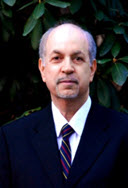Recently, I conducted a workshop on safety and liability for transportation directors. I asked innocently, "What do you do after training?" Several attendees shouted out, "More training!"
Were these individuals merely being cute? Or were they being naïve? Regrettably, my experiences in forensic accident analysis suggest the latter. This common misconception has devastating consequences for transportation systems and their passengers.
The Training Conundrum
Contrary to popular belief, the importance of training can be overstated. This is because, without the presence of certain other system elements, even the most appropriate, thorough and insightful training may not provide the benefits for which it was designed and intended. Most important of these elements:
- The driver must understand the training
- The driver must retain the training
- The driver must apply the training
Only the first of these elements can occur in training itself - primarily through a combination of discussion, testing, grading and clarification. The driver's retention and application of training must be verified and evaluated by operating functions which occur
after training -- most importantly, monitoring, evaluation, supervision, re-training and enforcement.
In a courtroom, the provision of excellent and extensive training can haunt a transportation provider: If training was so terrific, how could the driver have made so many errors and omissions? The only explanation is that other system elements were either not provided properly, did not fit together, or were missing entirely.
Systems and Services
Reflecting this conundrum, a number of factors distinguish a system from a service. In a system:
- All the pieces are present
- All the pieces work properly
- All the pieces fit together
How do you determine if your service is a system? Try this exercise:
- Make a list of all your system's functions
- Compose a matrix, listing the functions on both axes
- Put a check-mark in every box where the performance of one function affects performance of the other
- Outline the ways in which these interrelationships affect one another
Steps #1 and #2 are relatively straightforward. Step #3 is a good test of whether or not relationships among system your elements exist. Also, completing step #3 will provide you with a guide for thinking about Step #4, and increasing your awareness of the interrelationships - even if you don't complete the entire effort as a pure exercise.
The distinction between a system and a service is not a mere abstraction. Nor is it of minor importance. There are reasons we commonly allude to transit "systems" and motorcoach "services." No motorcoach operator would deny the importance of safety. However, the unsubsidized, highly-competitive motorcoach industry has focused its marketing on customer service -- directed toward customers with choices. In contrast, transit operators focus primarily on service to the "transit-dependent."
Admittedly, the motorcoach industry's emphasis in marketing facilitates sales, and increases profitability. However, it is deadly in court. The recent deposition of a Transportation Supervisor contained this exact dialog:
Q: You mentioned some videotapes?
A: Uh-huh.
Q: Are these the tapes you are referring to?
A: Yes.
Q: The titles of the tapes are "Listen and Win, How to Keep Customers Coming Back." That is the first one. Second one is "Communicating for Results, How to be Clear, Concise and Credible." The third one is the two-volume set which is "Communicating with Customers." The fourth one is "Communicating with People on the Job." And the final one is "Solving People Problems on the Job."
A: Yes.
Q: Any particular reason you chose these videotapes?
A: My department focuses a lot on customer service because everybody that works here and out at all of our facilities are our customers."
Q: Did you ever consider buying any videos on driver or passenger safety?
A: No.
Q: I'm just curious as to why you would focus on training in customer service.... Can you tell me that?
A: We want to try to keep everybody happy.
Was this attorney clever? You bet. Prepared? Ditto. But this is precisely what one is likely to encounter in a courtroom when his or her driver breaks a passenger's neck - which is literally what happened in this case. Did the defendant have a transportation system? Not remotely. Will he pay dearly for it? You can bet the farm.
Embracing the Conundrum
It is a challenge for a large company, with sweeping economies of scale, to provide its service systematically. The challenge is daunting for thousands of small companies and owner-operators. Yet these distinctions provide no defense in the courtroom. Far more likely, jurors will reason that companies which are not organized, and which do not articulate the full spectrum of safety-related functions and procedures, should simply not exist. Imagine how they will feel when they find these activities lacking - much less missing altogether -- in a large company!
Inefficiency aside, home cooking has considerable redeeming value. So too do the unique and often creative characteristics of small motorcoach operations, characteristics which can be enchanting. But no degree of charm will offset the failure to provide safe service. And no form of magic will transform a service into a system if pieces are missing, or don't fit together.
What should you do about missing pieces? Simple: Identify them, provide them, make sure they work effectively, and make sure they fit together. Don't fall victim to the training conundrum. Use it to make your system better.
Ned Einstein is the President of Transportation Alternatives, a passenger transportation and automotive consortium engaged in consulting and forensic accident investigation and analysis (more than 600 cases). Specializes in elderly, disabled, schoolchildren. Mr. Einstein has been qualified as an Expert Witness in accident analysis, testimony and mediation in vehicle and pedestrian accidents involving transit, paratransit, schoolbus, motorcoach, special education, non-emergency medical transportation, taxi, shuttle, child transport systems and services...
©Copyright - All Rights Reserved
DO NOT REPRODUCE WITHOUT WRITTEN PERMISSION BY AUTHOR.








